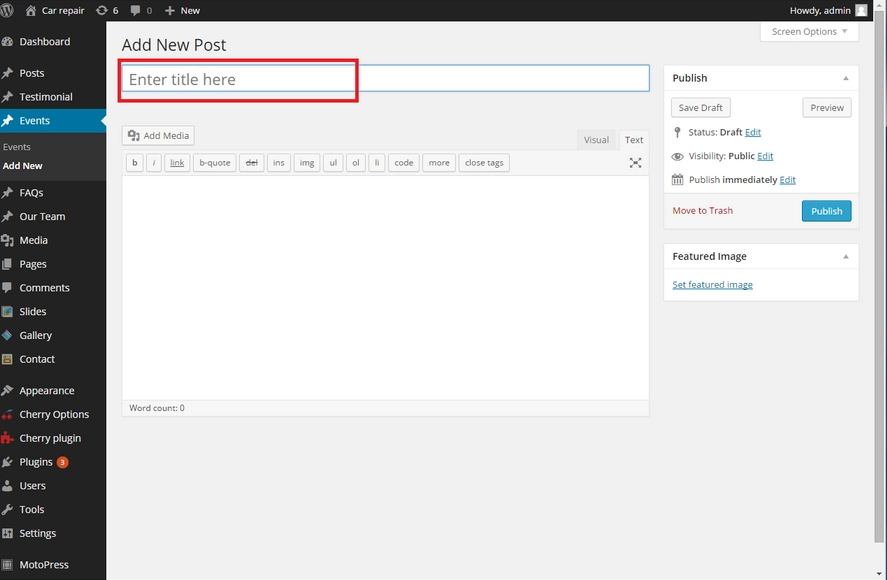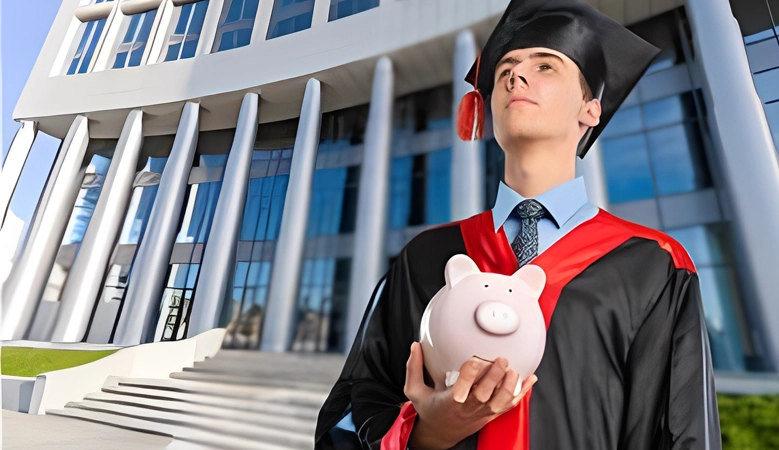Table of Contents
Introduction
Student loans are a crucial aspect of financing higher education, and one of the key decisions borrowers face is choosing between fixed and variable interest rates. Each option comes with its own set of advantages and disadvantages. In this in-depth analysis, we will explore the pros and cons of fixed vs. variable/lowest interest rates student loans, shedding light on critical factors that borrowers should consider.
How Do Fixed Interest Rates Benefit Borrowers in Student Loans?
Fixed interest rates offer borrowers a stable and predictable repayment environment. Best student loan refinance decisions often involve opting for fixed rates, assuring that monthly payments remain constant throughout the loan term. This stability is particularly advantageous during periods of economic uncertainty or rising interest rates. Borrowers can budget effectively, knowing that their payments won’t fluctuate, providing financial peace of mind.
Another significant benefit of fixed rates is protection against market volatility. As financial markets change, borrowers with fixed interest rates remain shielded from sudden increases, safeguarding them against unexpected financial burdens.
Are Variable Interest Rates a Risk Worth Taking for Student Loan Borrowers?
While variable interest rates may initially offer lower rates compared to fixed alternatives, they come with inherent risks. Earnest student loans often attract borrowers seeking initial cost savings, but the unpredictability of variable rates can lead to higher payments over time. Economic shifts or rising interest rates can cause a spike in monthly payments, potentially challenging for those on tight budgets.
Understanding one’s risk tolerance is crucial when considering variable rates. Borrowers should assess their ability to manage potential fluctuations in payments, recognizing that while there is potential for savings, there is also an increased level of financial uncertainty.
What is the Stability Advantage of Opting for Fixed Interest Rates on Student Loans?
The stability of fixed interest rates provides a significant advantage to borrowers seeking long-term financial security. When facing the decision of student loan refinance, choosing fixed rates ensures a constant monthly payment unaffected by market fluctuations. This stability is particularly appealing to individuals with a preference for structured budgeting and financial planning.
Moreover, the fixed-rate advantage extends beyond economic factors. Even if there are changes in the broader financial landscape, borrowers with fixed rates maintain the same interest rate agreed upon at the beginning of the loan, fostering a sense of reliability and predictability throughout the repayment period.
Do Variable Interest Rates Offer Initial Cost Savings for Student Loan Borrowers?
Opting for variable interest rates can provide an initial cost advantage for student loan borrowers. During periods of economic stability, variable rates are often lower than fixed rates, offering an opportunity for immediate savings on interest payments. It can be especially attractive for borrowers looking to minimize their expenses in the early stages of loan repayment.
However, it’s crucial to weigh this potential saving against the inherent risk of future rate increases. While variable rates may offer initial cost savings, they leave borrowers exposed to the uncertainties of market fluctuations, making careful consideration essential before choosing this option.
How Does Economic Inflation Impact Fixed and variable/lowest interest rates student loans?
Economic inflation plays a pivotal role in shaping the landscape of student loan interest rates. With how to refinance student loans becoming a common question for borrowers, understanding the impact of inflation is crucial. Fixed interest rates provide insulation against inflation, as the agreed-upon rate remains constant throughout the loan term. It shields borrowers from the erosion of their purchasing power over time.

On the other hand, variable interest rates are more susceptible to inflation. As inflation rises, so do variable rates, potentially increasing the financial burden on borrowers. Assessing the prevailing economic conditions and future inflation projections is essential for making an informed decision on the type of interest rate that aligns with individual financial goals.
Are Fixed Interest Rates for Student Loans Always Higher Than Variable Rates?
Contrary to a common misconception, fixed interest rates for student loans are not always higher than their variable counterparts. While fixed rates may start slightly higher, they provide borrowers with the assurance of stability throughout the repayment period. The decision between fixed and variable rates often involves weighing the immediate cost savings of variable rates against the long-term security of fixed rates.
Borrowers should carefully compare the current market conditions, interest rate differentials, and their financial circumstances to determine which option aligns with their goals and preferences.
What Role Does Market Fluctuation Play in Variable Interest Rates for Student Loans?
Market fluctuations have a direct impact on variable interest rates for student loans. These rates are often tied to benchmark interest rates, such as the federal funds rate. As these benchmarks change in response to economic conditions, variable rates follow suit. Borrowers considering refinancing student loans with variable rates should monitor market trends closely and be prepared for potential adjustments in their monthly payments.
Understanding the historical patterns of market fluctuations and their correlation with interest rates is essential for borrowers opting for variable rates. It allows for informed decision-making and proactive financial planning to mitigate the impact of market volatility.
Can Fixed Interest Rates Provide Long-Term Budgeting Security for Students?
The long-term budgeting security provided by fixed interest rates is a key factor that attracts many student loan borrowers. As individuals pursue their education and enter the workforce, having a consistent monthly payment allows for better financial planning. With fixed rates, borrowers can set realistic budgets, allocate funds efficiently, and navigate their financial responsibilities with confidence.
This stability proves especially beneficial for those with fixed incomes, ensuring that their student loan payments remain a manageable and predictable component of their overall financial commitments.
Are There Situations Where Variable Interest Rates Are More Favorable for Borrowers?
While fixed interest rates offer stability, there are situations where variable rates may be more favourable for borrowers. Refinance student loans with variable rates can be advantageous during periods of economic stability or when interest rates are at historically low levels. Borrowers who anticipate early repayment or have a higher risk tolerance may find variable rates to be a strategic choice, potentially saving on overall interest costs.
Borrowers need to assess their financial goals, risk tolerance, and the prevailing economic conditions to determine whether variable rates align with their unique circumstances.
How Does the Loan Term Affect the Choice Between Fixed and Variable Interest Rates?
The choice between loan terms selected by borrowers also influences the choice between fixed and variable interest rates. It may benefit more from fixed rates, providing a consistent payment structure over an extended period. It allows borrowers to plan for the future with confidence, knowing that their payments will remain stable throughout the life of the loan.
Conversely, borrowers opting for shorter-term loans may find variable rates more appealing. The potential for lower initial interest rates can lead to cost savings, especially for those planning to repay their loans quickly. Assessing individual financial goals and the anticipated duration of loan repayment is essential when determining the optimal interest rate structure.
Are There Hidden Risks Associated with Variable Interest Rates on Student Loans?
While variable interest rates offer potential cost savings, they come with inherent risks that borrowers must be aware of. One significant risk is the unpredictability of future rate increases. As economic conditions change, variable rates can rise, leading to higher monthly payments for borrowers.
Additionally, the lack of certainty in repayment amounts can create challenges for budgeting and financial planning. Borrowers considering student loan refinance with variable rates should carefully evaluate their risk tolerance and ability to manage potential fluctuations in their monthly payments.
What Impact Does the Federal Reserve Have on Fixed and Variable Student Loan Interest Rates?
The Federal Reserve plays a crucial role in influencing both fixed and variable/lowest interest rates student loans interest rates. Changes in the federal funds rate directly impact variable rates, making them responsive to the broader economic environment. Borrowers should stay informed about the Federal Reserve’s monetary policy decisions, as these can have a direct impact on the interest rates they encounter when exploring options for how to refinance student loans.
On the other hand, fixed rates are less directly affected by short-term changes in the federal funds rate. The stability of fixed rates provides a buffer against immediate market fluctuations, offering borrowers a sense of security in their repayment plans.
Can Borrowers Switch Between Fixed and Variable Rates During the Loan Term?
In certain cases, borrowers may have the option to switch between fixed and variable interest rates during the loan term. This process, known as refinancing, allows borrowers to reassess their financial situation and adjust their interest rate structure accordingly. However, it’s important to note that refinancing is subject to the lender’s policies and the prevailing market conditions.
Borrowers considering a switch between fixed and variable rates should carefully evaluate the potential benefits and drawbacks, taking into account their long-term financial goals and the current economic climate. Consulting with financial advisors and understanding the terms and conditions of the refinancing process is essential for making an informed decision.
Are There Caps or Limits to Prevent Extreme Increases in Variable Interest Rates?
To protect borrowers from extreme increases in variable interest rates, lenders often implement caps or limits on how much rates can change over a specific period. These caps are designed to provide a degree of predictability and limit the impact of market volatility on borrowers’ monthly payments. However, borrowers must understand the specific terms of these caps, including the maximum rate increase allowed and the frequency of adjustments.
Before opting for variable interest rates, borrowers should carefully review the terms and conditions provided by the lender, ensuring they have a clear understanding of the potential rate adjustments and associated caps.
How Do Financial Goals and Risk Tolerance Influence the Decision Between Fixed and Variable Interest Rates for Student Loans?
One of the most significant factors influencing the decision between fixed and variable interest rates is the alignment with individual financial goals and risk tolerance. Borrowers must assess their long-term financial objectives, considering factors such as income stability, career trajectory, and overall financial health.
Financial goals play a pivotal role in determining whether the stability of fixed rates or the potential cost savings of variable rates better align with a borrower’s objectives. Additionally, risk tolerance is a crucial consideration, as borrowers must evaluate their comfort level with the uncertainties associated with variable rates.
Conclusion
In conclusion, the decision between fixed and variable interest rates for student loans requires careful consideration of various factors. Borrowers must weigh the stability and predictability offered by fixed rates against the potential initial cost savings and risks associated with variable rates. Understanding the impact of economic factors, inflation, and market fluctuations is essential for making an informed decision that aligns with individual financial goals.
Ultimately, whether considering student loan refinance or choosing an initial loan structure, borrowers should prioritize their long-term financial well-being. By evaluating their financial goals, risk tolerance, and the prevailing economic conditions, borrowers can make a decision that provides a secure foundation for their educational and financial journey. For additional guidance and resources on student loans, consider visiting Jointhegrave.com.













Leave a Reply